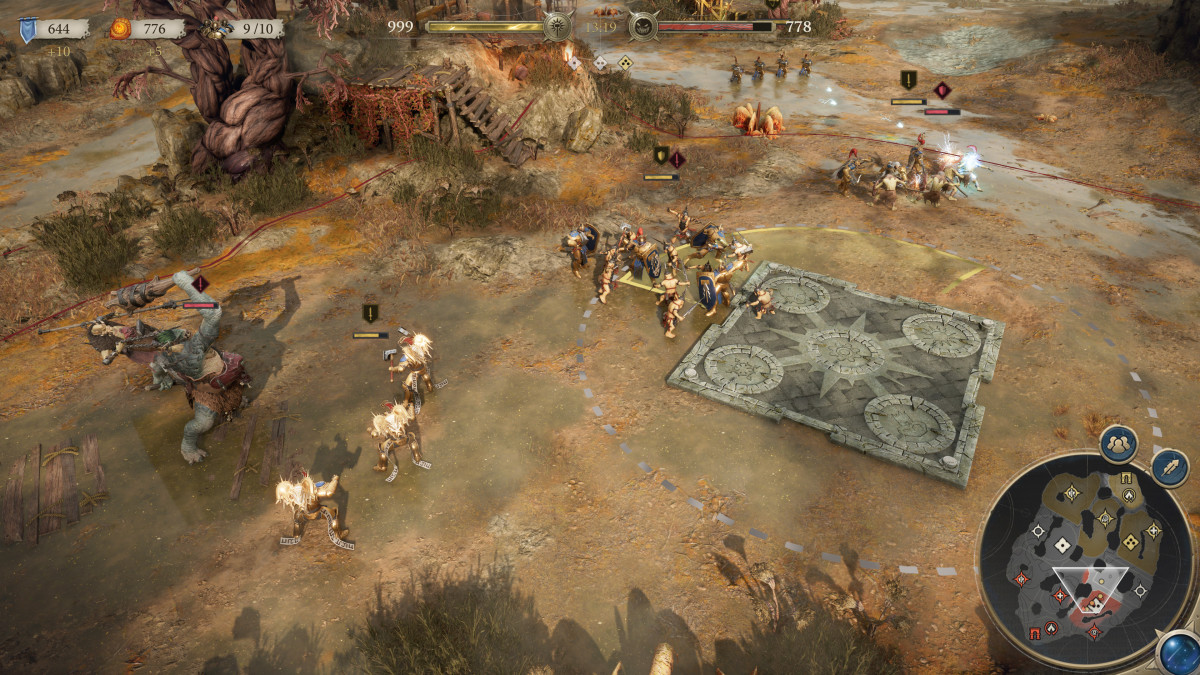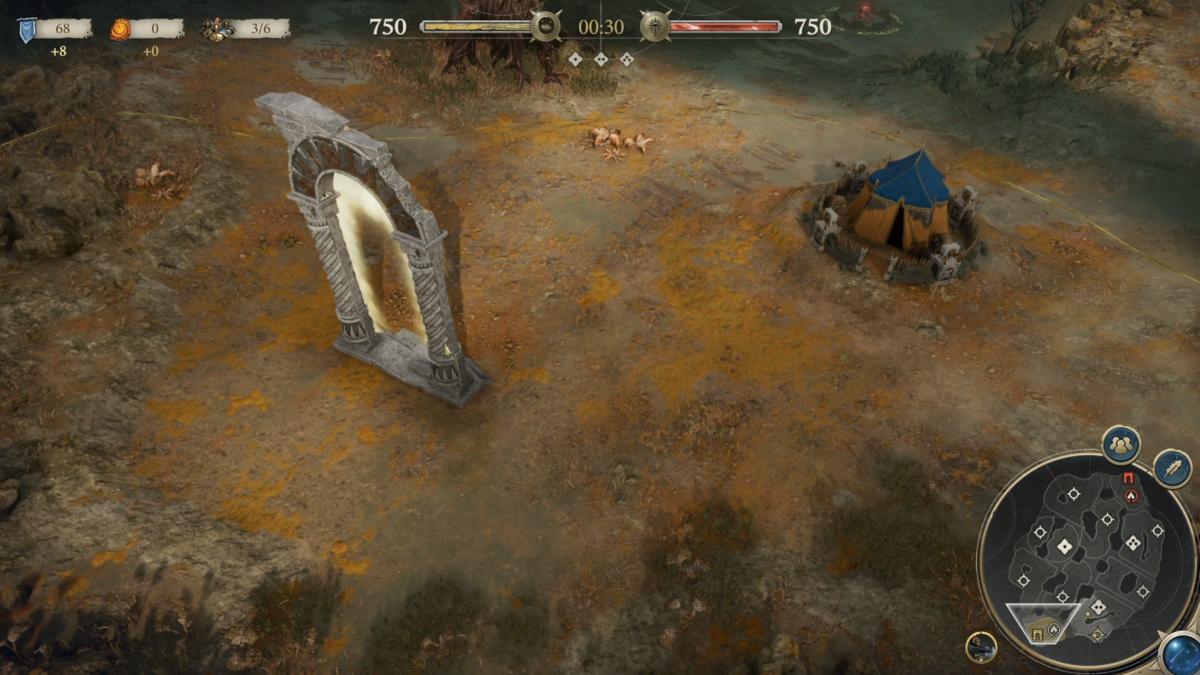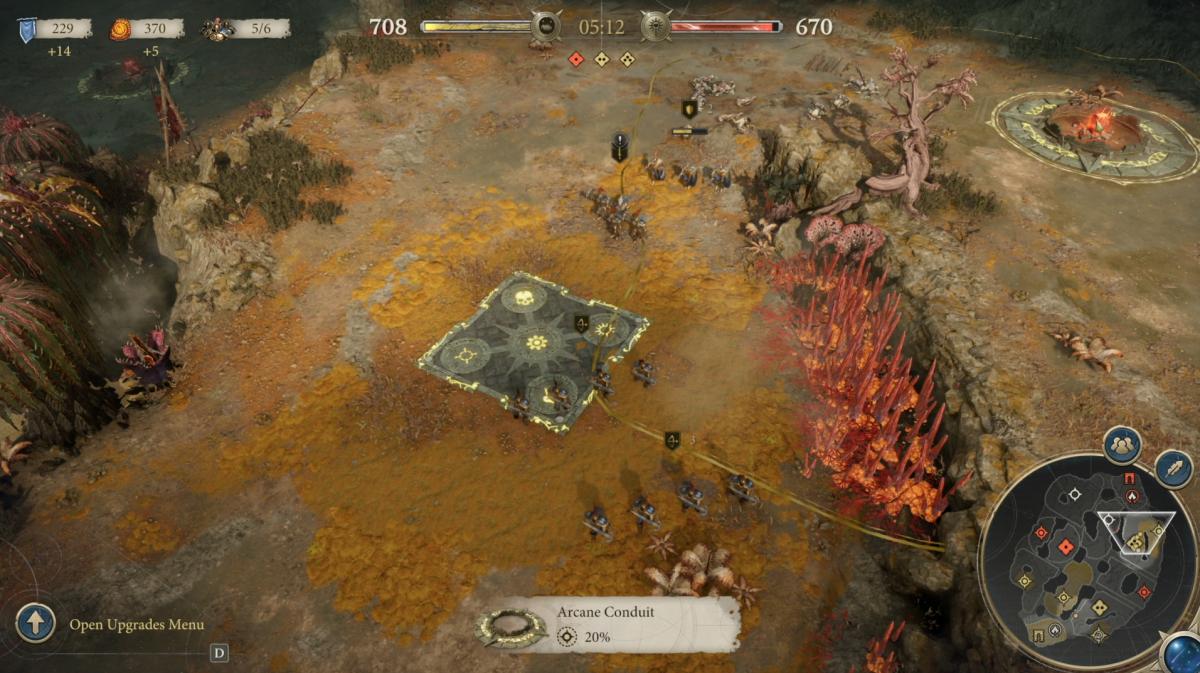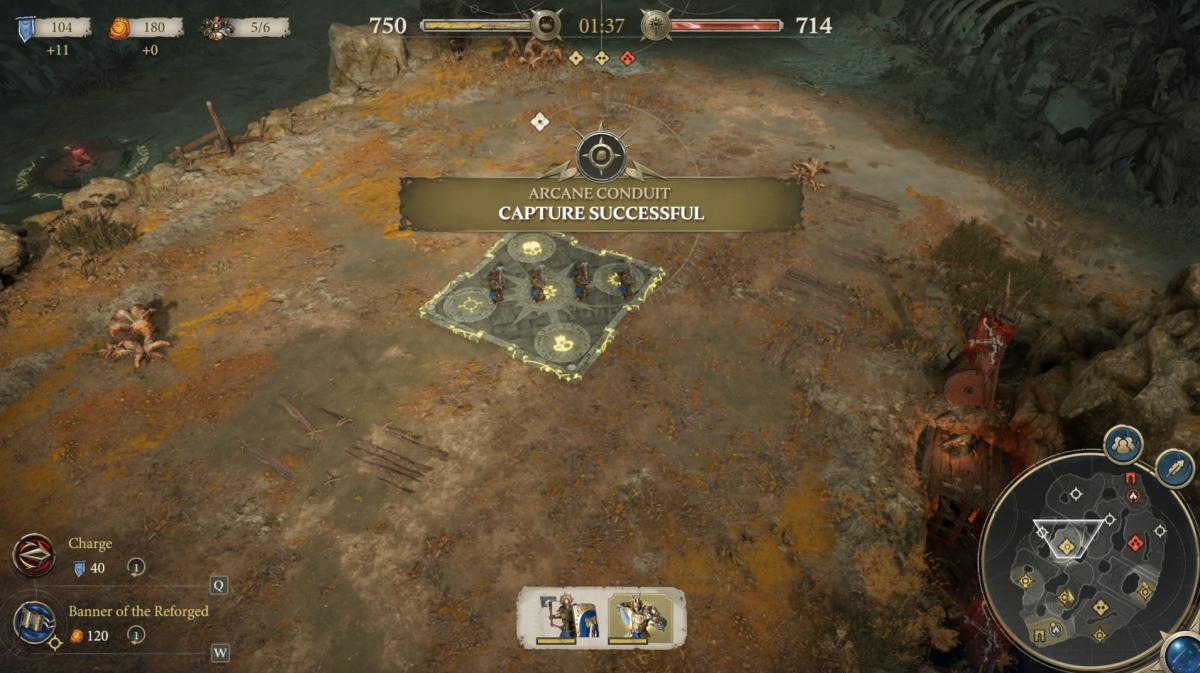Warhammer Age of Sigmar: Realms of Ruin hands-on preview: a test of mettle

It’s a good thing video games haven’t incorporated smell as a feature just yet, because Ghur, the Realm of Beasts, is as foul a swamp you’ll ever see: dirty, moist, and full of disgusting creatures that want to eat you – or do things worse still. This is the situation my scouting party of warriors from the Stormcast Eternals have to deal with as they dash ever deeper into the swamp to clear the path for the main force.
They stand out clearly from the environment in their shiny armor and their deep blue robes – unlike their enemies, the Orruk Kruleboyz. They look thin for Orruks, but are just as fierce and a lot more cunning than their regular counterparts. Ghur is their home and it’s the perfect place for their ambush tactics. In this case, though, my Stormcast Eternals have the moment of surprise, because the scouts can turn invisible to sneak up on the ambushers. Didn’t expect that ya gits, did ya?
These scouts are assault units, one of four unit types in Warhammer Age of Sigmar: Realms of Ruins, the upcoming RTS game by Frontier Developments. The others are shield units, ranged units, and heroes. The game uses a rock-paper-scissors countering system, so assault units are effective against shield units, which are great against ranged units, which in turn easily deal with assault units. Heroes are in the middle of it all, great all-rounders. It’s not as strict a system as it sounds like, but gives you a good idea of which units to send against which opponents.
Playing around with the combat scouts in this tutorial mission reveals a lot of Realms of Ruin’s mechanics. One of these is combat locking: When two enemy units are near each other, they join melee combat – ‘til death does them part. You essentially lose direct control of units once they enter the fray. In this state you can only activate their abilities or force them to retreat to their HQ, similar to Company of Heroes’ retreat mechanic. The RTS transforms into an auto-battler for a little while there, which as a two-decade veteran of this genre doesn’t feel great at first. Usually, you want more control, not less. That said, you can still micromanage to optimize things a little.

Back to my combat scouts: They shoot a salvo of bolts from their hand crossbows before closing in for the melee, softening up their opponents. If you just send them, one salvo is all you get. You can, however, spam-click an area behind them to force a bit of kiting, getting four or five shots before combat lock kicks in. That’s not a huge amount of damage, but it can make the difference – so those who put in the extra effort will still be rewarded.
While combat lock certainly diminishes the importance of control and micro – of the “real-time” in RTS – which is clearly a way of putting controller players and mouse and keyboard users on equal footing, it emphasizes the other aspect of the genre: strategy. Since you can’t change the order of battle once combat has been joined, it’s of immense importance to position your units well. You want the rocks to hit the scissors without being intercepted by the paper. That means that every engagement becomes a dance for the best positioning, a game of chicken: Who’s going to charge in to grab the momentum, but risk an interception? It’s a different type of intensity than splitting a stack of Marines against a swarm of Banelings in StarCraft 2.
The decision of putting crossplay between controller and mouse and keyboard users into this game permeates every aspect: combat locking is one of these, the slow tempo another. Overall, those elements work regardless of platform, though. It’s an intense game, a strategic game, even though it feels a bit sluggish.
What PC players will rightfully moan about, however, are the UI and controls. While Frontier has really thought through the controller controls and came up with an innovative system that seems to work very well and fluidly, the mouse and keyboard controls are not up to par. Basic things like the ability to assign a number key to a building or location to quickly jump there are missing, though there is a shortcut that gets you back to HQ quickly. You can’t set a rally point for your production directly from the portal, where units are produced, but can set one from the HQ, which is a little confusing. There are no tooltips for unit abilities when you hover over them with your mouse. You can’t even click on your production building with the mouse, having to use a button on the right side of the screen or a shortcut instead. So all the functions are there in principle, but somewhat strangely executed. RTS games from 20 years ago have better functionality in this regard – whether these are things that just weren’t implemented in the build we got to play, have been deliberately left out to balance the game and help out controller users, or aren’t planned at all, I do not know at this point. I definitely hope that Frontier will take note and deliver more functionality here – StarCraft 2 was released 13 years ago and perfected control functionality in RTS games. It’s right there. Please take note.

These issues should not take away from the fact that Warhammer Age of Sigmar: Realms of Ruin has many good ideas to offer. One of these is the territory control mechanic. To get more resources and win a match in this game, you capture resource nodes and victory points – think Company of Heroes and Dawn of War. Unlike in these games, however, simply taking a point isn’t all that there is to it. Each point commands control of a region of the map. Keeping a unit inside this control zone will expand it to eventually encompass the entire region, granting you additional resources. In return, you can diminish a player’s territory simply by crossing into it with a unit – you don’t necessarily have to attack the node itself to reduce the economical gain your opponent has from it. This is a great way to force a battle on your terms or lure some units out of position. In a game without an active economy, this is a really neat system to bring some of those harassment tactics into the equation.

Bastions are another cool feature of the game. They can be built on the resource nodes, called Arcane Conduits, and come in four types: A powerful defensive tower, a healing structure (incredibly important, for healing units back at HQ costs resources), a mine to get more of the tech-related resource, and an outpost to gain vision as well as the command-related resource. Each of these structures costs quite a bit to build, but has enormous impact on the game – again, Frontier makes the most of the very limited base building it put into Realms of Ruin.
The tech tree offers two distinct upgrades for each unit of the asymmetric factions, giving them unique capabilities depending on what you need – and only one, for the upgrades are exclusive. Sure, you could get more range and damage on your basic Orruk ranged units, but you could also upgrade their ability to be sneaky if you’re playing with ambushes a lot. It gives all the units on the roster a lot more variety and is a great vehicle for decision making.
Decision making. That figures into the way abilities work in Realms of Ruin as well. Instead of mana or energy or some other unit-specific resource, abilities cost Command Points to use, a resource gained from controlling territory and also used for basically everything else aside from research. That means the question of taking a fight or not isn’t simply a tactical or strategic one, it’s also an economical one. You suddenly start thinking about every use of an ability – is this worth it? Is it critical I use this to win this battle? That can make some victories truly costly in every sense of the word, while a defeat may be less so if you’ve forced your opponent to use up their reserves. Naturally, a defeat despite using many abilities becomes truly devastating.

In combination with combat locking, another big driving force of decision making, we get a RTS game in Warhammer Age of Sigmar: Realms of Ruins with little focus on “real-time” and a great deal on “strategy” – a game that looks visually appealing, that professes to be relaxed and casual, but that is punishing to its core if you make a wrong decision. It’s an exciting mixture with a lot of potential, if things like mouse and keyboard controls and balancing can be ironed out.
You should definitely try the upcoming open beta of Warhammer Age of Sigmar: Realms of Ruins, if you’re interested, and leave feedback for the developers – this data will be vital for fine-tuning the game ahead of release.
